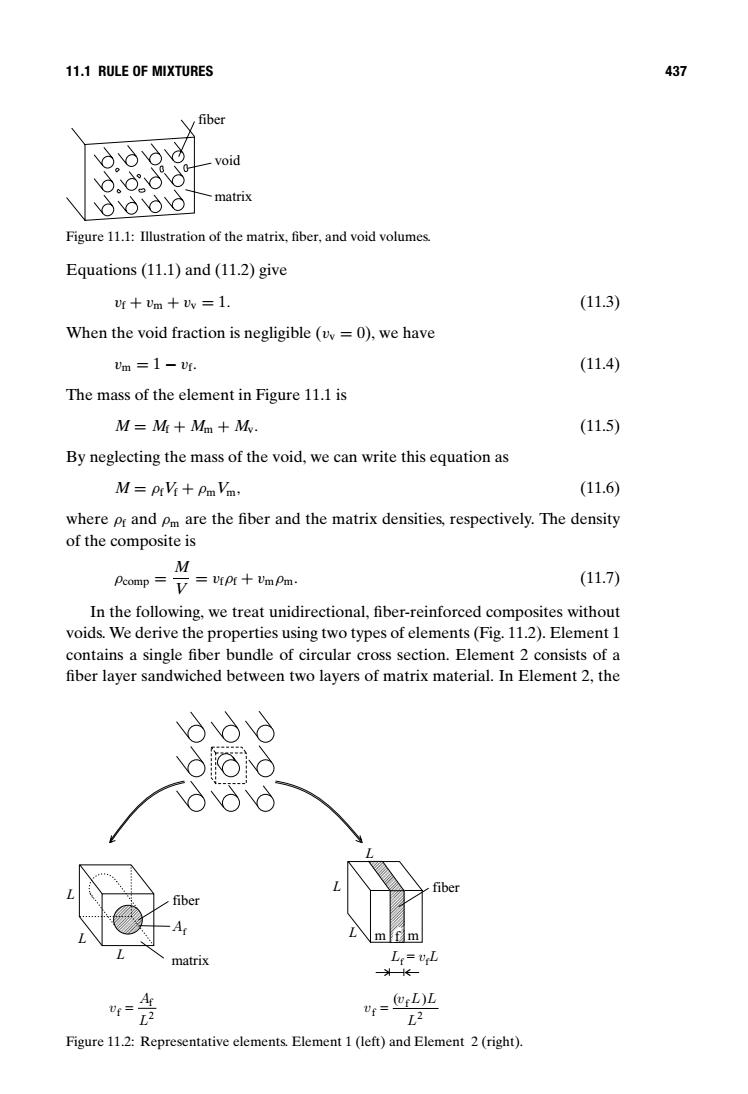正在加载图片...

11.1 RULE OF MIXTURES 437 fiber void matrix Figure 11.1:Illustration of the matrix,fiber,and void volumes. Equations (11.1)and (11.2)give Ur vm +vv =1. (11.3) When the void fraction is negligible (v=0),we have Um =1-Uf. (11.4) The mass of the element in Figure 11.1 is M=M+Mm My. (11.5) By neglecting the mass of the void,we can write this equation as M=PrVi+Pm Vm, (11.6) where Pr and pm are the fiber and the matrix densities,respectively.The density of the composite is M Pcomp==UrPr+UmPm- (11.7) In the following,we treat unidirectional,fiber-reinforced composites without voids.We derive the properties using two types of elements(Fig.11.2).Element 1 contains a single fiber bundle of circular cross section.Element 2 consists of a fiber layer sandwiched between two layers of matrix material.In Element 2,the òδd fiber fiber Lm f m matrix L=vL 斗长一 r= L2 Ur=rL)L Figure 11.2:Representative elements.Element 1(left)and Element 2(right).11.1 RULE OF MIXTURES 437 fiber void matrix Figure 11.1: Illustration of the matrix, fiber, and void volumes. Equations (11.1) and (11.2) give vf + vm + vv = 1. (11.3) When the void fraction is negligible (vv = 0), we have vm = 1 − vf. (11.4) The mass of the element in Figure 11.1 is M = Mf + Mm + Mv. (11.5) By neglecting the mass of the void, we can write this equation as M = ρfVf + ρmVm, (11.6) where ρf and ρm are the fiber and the matrix densities, respectively. The density of the composite is ρcomp = M V = vfρf + vmρm. (11.7) In the following, we treat unidirectional, fiber-reinforced composites without voids. We derive the properties using two types of elements (Fig. 11.2). Element 1 contains a single fiber bundle of circular cross section. Element 2 consists of a fiber layer sandwiched between two layers of matrix material. In Element 2, the L L L matrix fiber Af L L L m f m fiber Lf = v Lf 2 f f )( L LLv v = 2 f f L A v = Figure 11.2: Representative elements. Element 1 (left) and Element 2 (right)